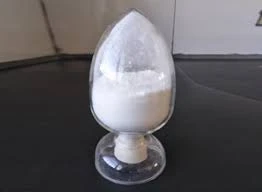β-Nicotinamide Mononucleotide,CAS 1094-61-7 ,NMN
Antioxidant additives play a crucial role in enhancing the lifespan and performance of plastic products, safeguarding them against oxidative degradation. As the demand for durable, high-performance plastics continues to rise across various industries, understanding the significance and application of antioxidant additives has become paramount. Based on both field experience and scientific research, these additives not only extend the lifespan of plastics but also contribute significantly to sustainability efforts. 
Antioxidants for plastics serve as protective agents that inhibit oxidation—a chemical process facilitated by the exposure to oxygen, heat, and light. Oxidation can lead to the deterioration and weakening of plastic materials, often resulting in discoloration, loss of mechanical properties, and ultimately, product failure. By incorporating antioxidants, manufacturers can enhance the stability and durability of plastics, making them more reliable for long-term use.
Experts in polymer science recognize several types of antioxidant additives commonly used in the industry, including primary antioxidants (free radical scavengers) and secondary antioxidants (hydroperoxide decomposers). Primary antioxidants, such as hindered phenols, impede the oxidative chain reaction by neutralizing free radicals, while secondary antioxidants like phosphites decompose hydroperoxides into non-radical products. This synergistic effect between different antioxidants ensures comprehensive protection for polymer-based materials.
The selection of appropriate antioxidants hinges on multiple factors, including the specific polymer, the intended application, and environmental conditions. For instance, polypropylene—a widely used plastic in automotive and packaging sectors—requires antioxidants to maintain its properties when exposed to high temperatures and UV light. Personal experience reveals that a blend of both primary and secondary antioxidants delivers optimal results, safeguarding the material against thermal-oxidative degradation.
In applications where regulatory compliance is critical, such as food packaging, non-toxic and FDA-approved antioxidants are preferred to ensure consumer safety without compromising the effectiveness of the plastic products. Working closely with compliance experts, manufacturers can tailor antioxidant solutions that meet stringent safety standards while enhancing product performance.antioxidant additives for plastics
Industry leaders are also exploring innovative antioxidant solutions as they pursue sustainability goals. The inclusion of antioxidants can facilitate recycling processes by protecting plastics from oxidative degradation during reprocessing. This not only extends the material's lifespan but also contributes to reducing plastic waste—a key objective in global sustainability initiatives.
Additionally, advancements in nanotechnology have paved the way for the development of nanoparticle-based antioxidants. These novel additives offer enhanced dispersion within polymer matrices, resulting in improved efficacy and reduced additive load. This evolving technology is reshaping the landscape of antioxidant additives, providing more efficient and cost-effective solutions for manufacturers aiming to meet both performance and environmental targets.
Trust in the use of antioxidant additives is supported by extensive research and millions of dollars invested in developing and testing these compounds. Rigorous testing methodologies ensure that antioxidants perform reliably under various conditions, thereby establishing their authority in maintaining the integrity of plastic materials over extended periods.
Overall, antioxidant additives represent a critical component in the manufacturing of high-performance plastics. From enhancing product durability to supporting recycling initiatives, their importance spans across environmental and economic dimensions. Professionals in the field continuously advocate for the use of antioxidants as essential ingredients in plastic production. As the industry evolves, leveraging both traditional and cutting-edge antioxidant solutions will remain integral to achieving durability, efficiency, and sustainability in the world of plastics.
More product recommendations



